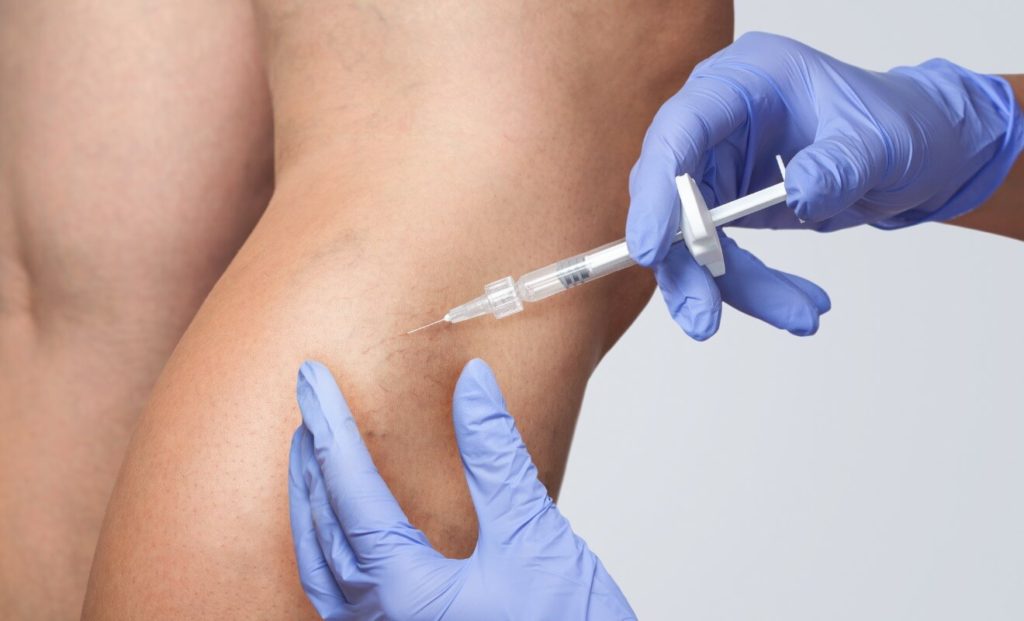What is Microsclerotherapy?
Microsclerotherapy is used to treat thread veins, and is by far the most common and most effective form of treatment. Some clinics will offer treatment of thread veins using laser or IPL. Although this can be quite effective with thread veins on the face, it is usually both painful and ineffective with thread veins on the legs. Microsclerotherapy involves the injection of a diluted drug, called a sclerosant, directly into the visible thread veins. With meticulous planning and technique, it is possible to get superb results for the vast majority of patients. In general, however, thread veins are surprisingly more difficult to treat than larger varicose veins and can take longer to get rid.
The Procedure
The procedure involves injecting a diluted drug, in the form of a sclerosant, into the veins. The sclerosant causes localised damage to the inner lining of the vein which causes the thread vein to collapse. The inner lining of the vein becomes thickened, sealing off the vein so that blood can no longer flow through it. The blood is redirected to deeper veins. During the treatment, the thread veins initially disappear instantly as the sclerosant is injected into the vein. However, the veins rapidly become more red and more visible again immediately after treatment due to inflammation. The veins can often look worse immediately after treatment. It is common to develop localised redness, similar to a nettle sting. It usually takes several days or even weeks for the inflammation to settle, and for the veins to disappear. As microsclerotherapy involves a series of tiny injections, some patients find this uncomfortable or mildly painful. The sclerosant used may also sting slightly. The procedure usually takes around 30-45 minutes. Most patients require between 2 and 4 sessions of microsclerotherapy, so it is important to note that it might take some time to fully resolve all of your thread veins. Ideally, the session would last until we have treated all the affected veins, but we must stop the treatment once we have reached the safety limit. The number of sessions required depends entirely on how many veins you present with and how well your veins respond to treatment (some veins may need treating more than once). At your consultation, we will give you a good idea of how many sessions you’re likely to require based on our past patients’ experiences
Microsclerotherapy Aftercare
- The sclerosant used may result in some bruising. The extent of the bruising will depend on the size of the area treated and the number of veins in the area.
- We will ask you to take at least a 10-minute walk following the appointment, prior to making your way home.
- You can drive on the same day as microsclerotherapy treatment.
- You can resume your normal activities following microsclerotherapy. We strongly encourage you to go on at least a 20-minute walk each day.
Microsclerotherapy Follow Up
Following a session of microsclerotherapy, you can book in for a reassessment follow-up or you can book straight in for a further session. It is not mandatory to attend and pay for a follow-up appointment after a microsclerotherapy session unless you feel that you would benefit from further treatment. Patients normally self-assess their treatment progress and decide whether they are satisfied with the results to date or would like to attend for a further session. There is no rush to attend for further sessions. You can wait up to 2 years before seeking another session.

